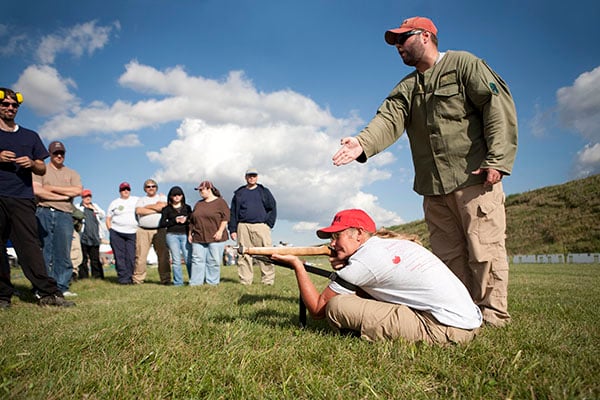
Last Updated on
Forging Responsible Citizens Through Marksmanship
-By John Buol–
The All Army Smallarms Championships loomed and I needed to train for it. Mobilized to active duty and assigned to a military post without readily-available range facilities for personal use, my only option was an abandoned quarry zoned for shooting. The event required rifle shooting out to 500 yards but I was limited to just over 50. I turned to the “Army Qualification Test” used by Appleseed Project as a training device because the targets and course of fire were similar and scaled for use at a 25 meter reduced range. In fact, Appleseed’s AQT course of fire is derived from the rifle National Match Course originally modified for All Army competition. I first used this in 2005 because I had no choice and have since used this as a training tool to help win six individual championships at All Army preparing this way.
“The Revolution was affected before the War commenced. This radical change in the principles, opinions, sentiments, and affections of the people, was the real American Revolution.” -John Adams
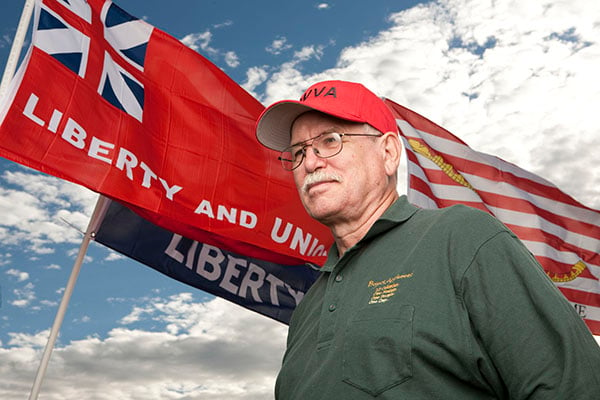
The Appleseed Project, hosted by the Revolutionary War Veterans Association, a 501(c)3 organization comprised of volunteers, promotes the American tradition of rifle marksmanship along with Revolutionary War history and grass-roots participation in the political process in a safe, non-partisan environment. RWVA believes that teaching rifle marksmanship and early American heritage provides a direct relationship between understanding American history and civic virtue. Americans losing sight of our country’s founding principles is resulting in reduced involvement in government, leaving a citizenry relegating governmental decisions solely to elected officials.
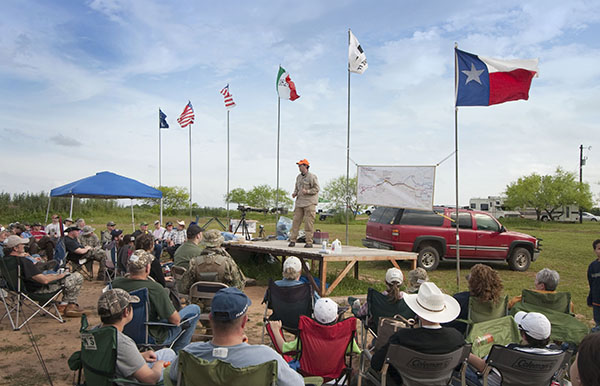
The media has long been referring to elected representatives as “leaders” when our nation’s true leadership is the citizenry. Elected officials are appointed by vote and should be considered legislative janitors, conducting day-to-day affairs on behalf of voter-constituents who have authorized them to act as an agent. Project Appleseed events are designed to counter the comfort of couch and television with reality. Conducted as two-day, family-friendly clinics, civic virtue is learned through stories of America’s founding and by cultivating skills of persistence and determination through rifle marksmanship. Learning heritage while developing shooting skills creates the appreciation needed to rekindle civic responsibilities. Attendees are driven to succeed through perseverance and challenged to apply their new-found appreciation of the Founding Fathers toward regular involvement in local, state or national government.
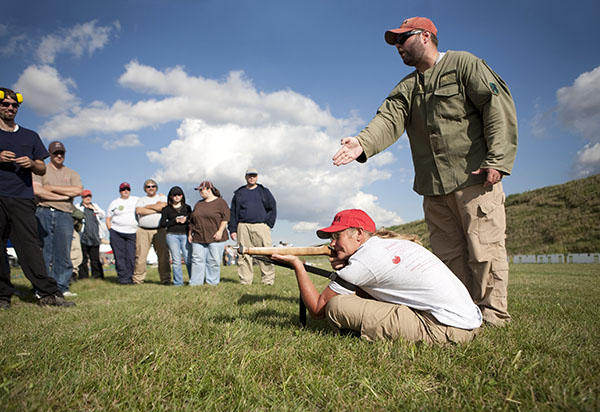
Pretty heady stuff for a shooting program but you’ll quickly learn that Appleseeds are more than rifle clinics. Founded by Jack Dailey, a successful real estate developer turned entrepreneur known as “Fred” for his surplus sales company (Fred’s M14 Stocks, named after his dog) and Shotgun News column, this self-described “ne’er do well” has presided a gun club and wrote a State-level NRA newsletter, earning awards for both. Getting involved in high-level competition shooting, running a firearms-related business and managing a gun club gave him insights that the eroding appreciation of our founders along with the decline of skilled marksmanship among American gun owners is due to apathy. The Appleseed Project represents his mission to fix both.
On the political front his message is regular, constructive action. Simple steps done consistently over time yields results. An example is regular use of the One Minute Letter. Similar to the book The One Minute Manager, citizens should regularly voice their position to their government with short correspondence. A succinct letter or email gets to the point, can be read in a minute and, being quick to write, requires less motivation to actually do. Even token action beats the best intention and encourages political activity. “Fred” describes this as winning the “soft war,” meaning the best way to improve the situation is to use our already-established political process and communicate your position now.
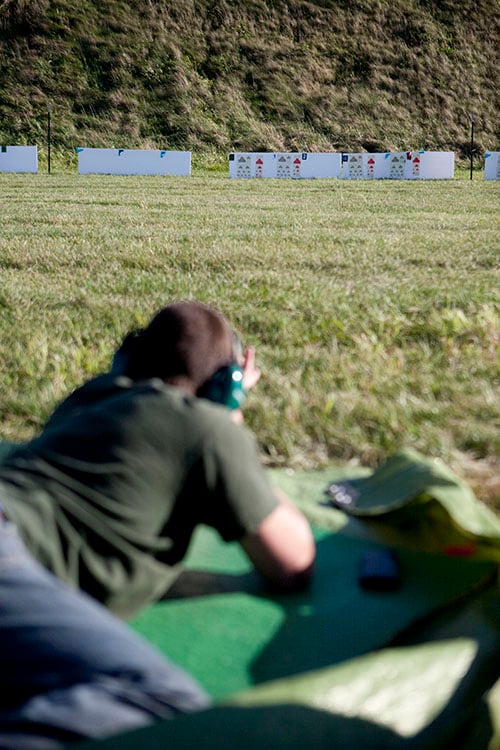
This runs counter to misinformed fabrications claiming the Appleseed Project is some anti-government militia movement. Quite the contrary, Appleseeds teach our heritage as a motivator to work within the established system of government our forefathers gifted us. In fact, even the program’s most ardent critics really have nothing bad to say about it. The Anti-Defamation League claims there is a trend in the United States of some groups towards idealistic concepts of armed resistance that have “percolated beyond extremist groups and movements into the mainstream” but does not classify Project Appleseed as a part of that. Sociologist James William Gibson classifies Project Appleseed within a broader movement that is unlikely to pose a danger to civil society. At its core, Appleseed is a marksmanship and American civics class.
Of course, shooting is a big part an Appleseed and what lures most participants. While a number of exercises are used, the main course of fire is dubbed the Army Qualification Test. The AQT copies a previous Excellence In Competition course used in military-sponsored matches and is derived from the rifle National Match Course. Shot on F-type silhouettes, competitors fire 40 rounds in four, ten-round strings consisting of two minutes at 100 yards offhand, 55 seconds at 200 sitting on two targets with a reload, 65 seconds at 300 prone with one reload on three targets, and five minutes at 400 prone on four targets. With 250 points possible the goal is to break 210 earning a Rifleman rating from RWVA. To make it accessible for all, the targets are scaled, all shooting is conducted at 25 meters and .22 rimfire rifles are encouraged.
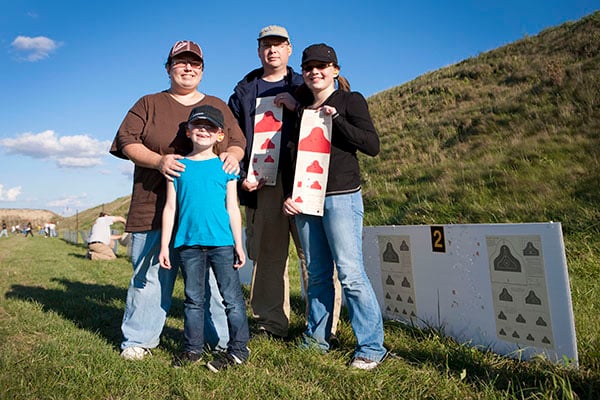
Don’t let the short distance fool you. Marksmanship principles learned on scaled targets translate to accurate shooting out to 500 yards. A centered, four-minute group will hold a twenty-inch silhouette at the “rifleman’s quarter mile” and this can be trained on a one-inch paster at 25 meters. The marksmanship challenge is essentially the same. Some of the most accomplished marksmen are the Smallbore competitors. International Rifle shot in the Olympics consists of rimfire rifles and these courses are based on gallery courses designed to teach the use of full-power battle rifles. Good marksmanship translates everywhere and can readily be learned on a reduced course. Appleseed instructors break the shooting process down into positions, natural point of aim and six steps of firing a shot and recognize mastering a .22 allows you to master a big center fire.

As for equipment recommendations, Ruger 10/22 rifles are the runaway favorite because they are plenty accurate out of the box, reliable, inexpensive, magazine fed and, with good aftermarket sights such as Tech-Sights, closely mimic self-loading centerfire rifles. From the factory the 10/22 has a short stock, so a comb raising kit and extended recoil pad fits it to a normal adult. A loop sling is preferred by knowledgeable marksman and a simple, GI-type (nylon or cotton) works well. For comfort during a long shooting day a simple padded shooting coat, such as used by the Marine Corps, and mat helps. Beyond a data book or notebook to record dope and a few odds and ends, that’s it. A person with zero shooting gear can purchase a complete, top-notch spread of equipment for this shoot for just over $300 and this gear will last a lifetime. In light of ever-escalating ammo prices, .22 rimfire remains a reasonable buy (at least when you can find it.)
Project Appleseed events are designed to counter the comfort of couch and television with reality. Conducted as two-day, family-friendly shooting clinics, civic virtue is discussed during breaks on the firing line via stories of America’s founding and by cultivating skills of persistence and determination through rifle marksmanship. Learning heritage while developing shooting skills creates the appreciation needed to rekindle civic responsibilities. Attendees are driven to succeed through perseverance and challenged to apply a new-found appreciation of the Founding Fathers toward regular involvement in local, state or national government.
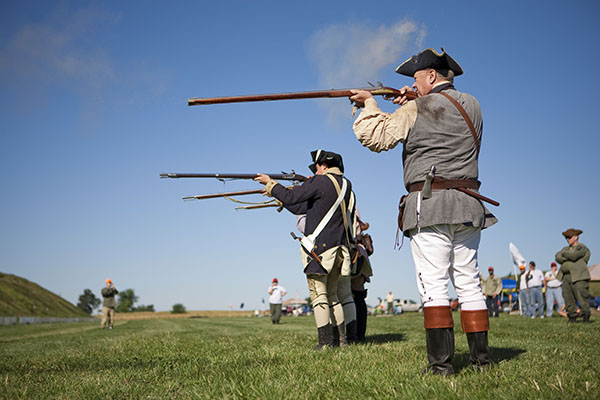
The real message to be learned from the Appleseed Project is: Get involved! Two centuries ago our ancestors had two options: Submit or fight. Today, we enjoy a third option. Interact with your community, correspond with editors, legislators, and other opinion leaders. Become active in government decisions and host activities. Make your voice heard and become a good example for others. Attending an Appleseed event is a great first step.
Photos by Michael Nemeth, Texas Appleseed




Comments (1)
Joseph Bishopsays:
April 29, 2018 at 10:21 pmVery good group. Can take a true new commer to rifles and make them outshoot 80% or notm rifle shorters in a couple days.